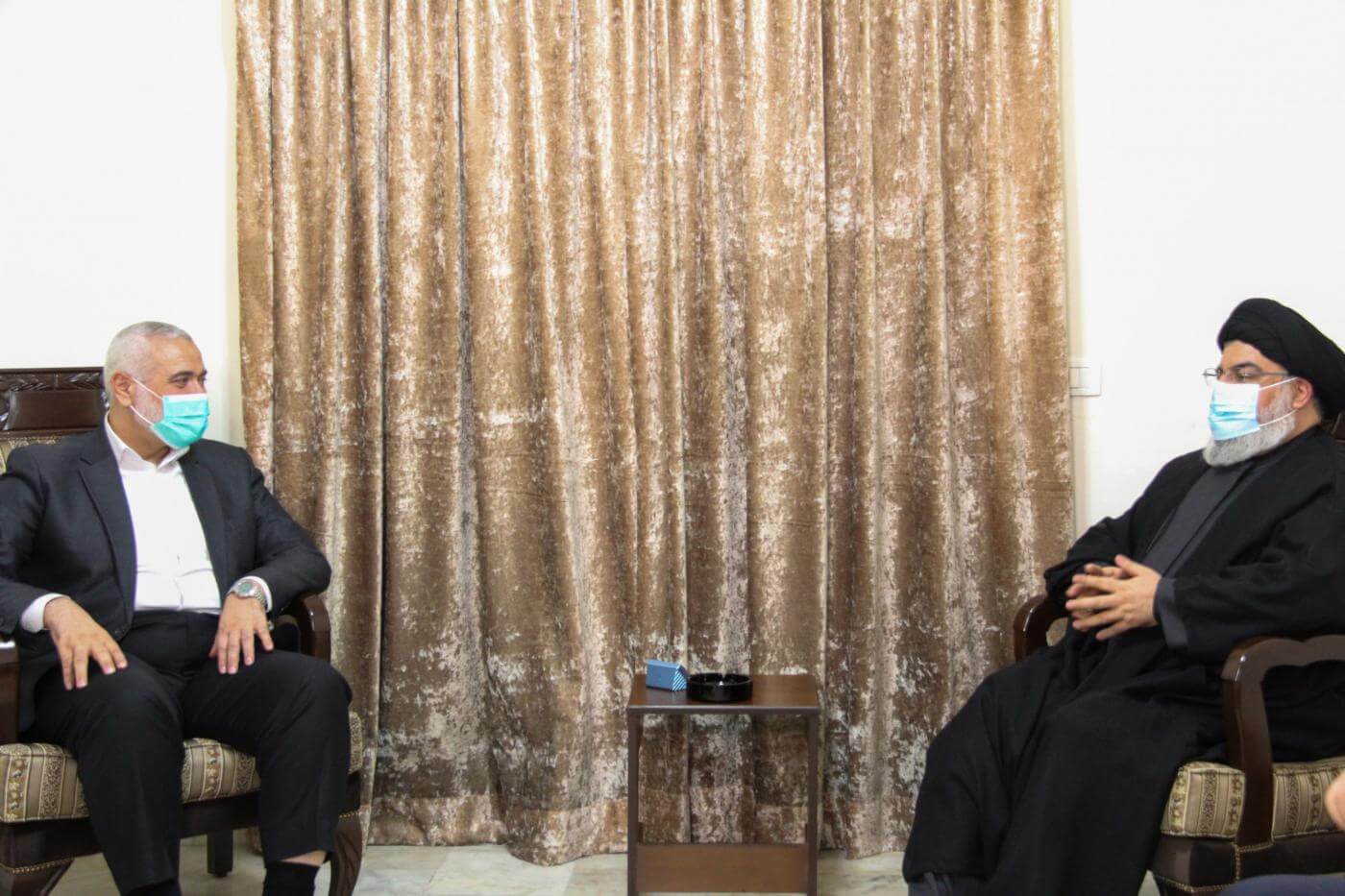In light of the 13 August agreement between Tel Aviv and Abu Dhabi, the chiefs of Palestine’s Hamas group and Lebanon’s Hezbollah movement met on Sunday to discuss the normalization of diplomatic ties between the Arab Gulf countries and Israel. Hamas leader Ismail Haniya arrived at Ain al-Helweh, the largest refugee camps for Palestinians in Lebanon, on Wednesday. He met with Hassan Nasrallah, the head of the Iran-backed Shi’ite Hezbollah group, at an undisclosed location. During the meeting, the two leaders stressed upon the importance of “stability” in the “axis of resistance” to counter Israel’s regional influence.
This was Haniya’s first trip to Lebanon in almost 30 years. During his visit, he utilized his time to participate in direct and video talks with Palestinian groups opposing the Israeli diplomatic initiative. Haniya, the political bureau leader of the militia that controls the Gaza Strip, arrived with Hamas camp guards and was received with a warm welcome by a large group of refugees. He reportedly discussed recent military and political developments in Lebanon, Palestine, and the Middle East with Nasrallah, highlighting the “dangers to the Palestinian cause”, with a special reference to the normalization of Arab ties with Israel. Haniya said that the warming attitude of the Arabs towards the Jewish state “does not represent the people, neither their conscience, nor their history nor their heritage”.
Israeli forces, who consider Hezbollah and Hamas to be terrorist organizations and enemies of the state, have in recent weeks targeted Hamas members in Gaza in response to the firing of incendiary balloons from across the border. Further, Israel has also been engaged in fighting with gunmen from Hezbollah at its northern Lebanese border. They also routinely launch airstrikes in Syria as they consider President Bashar al-Assad’s regime to be heavily backed by the two militant groups.
Ever since the 2006 war between Hezbollah and Israel, Nasrallah has rarely made any public appearances and continues to live in secret locations, often changing his residence. Stressing on the military prowess of his group, Haniya said, “Not long ago, our rockets only reached (targets) metres from Gaza’s borders. Today, the resistance in Gaza possesses rockets that can reach Tel Aviv and beyond Tel Aviv.”
The United States-brokered diplomatic plan attempts to bolster a regional alliance between the Gulf and Israel and, therefore, combine efforts to counter Iran. This has been condemned by Palestine as a “stab in the back”, especially in light of the occupation of the West Bank and the importance that Palestine holds to the diplomatic boycott of Israel as a strategy to achieve its statehood goals. Last week, following a Qatar-mediated de-escalation deal with Israel, the Hamas leader had also met the head of Fatah, its rival faction in Palestine, to pose a united front against the Israel-United Arab Emirates deal.
Hamas, Hezbollah Leaders Meet to Discuss “Stab in the Back” Israel-Arab Ties
The meeting marked Hamas chief Ismail Haniya’s first trip to Lebanon in 30 years
September 7, 2020

Hezbollah leader Hassan Nasrallah (R) with Hamas political bureau chief Ismail Haniya at an undisclosed location on 6 September. SOURCE: AFP/MIDDLE EAST EYE
